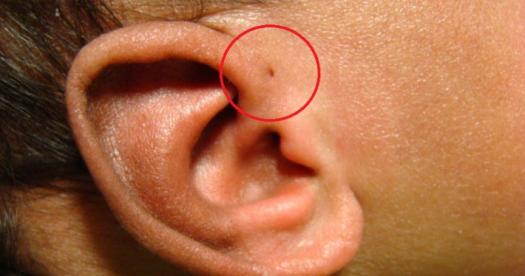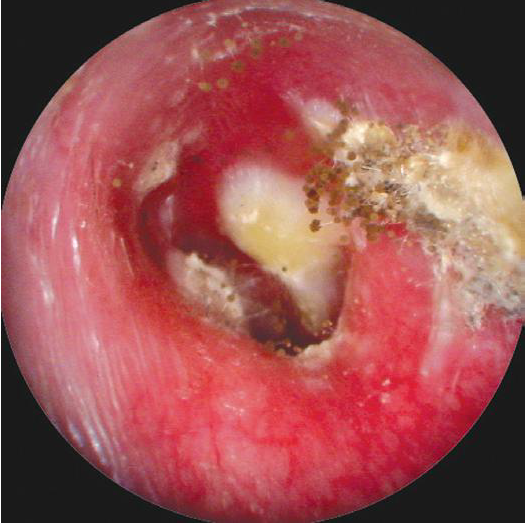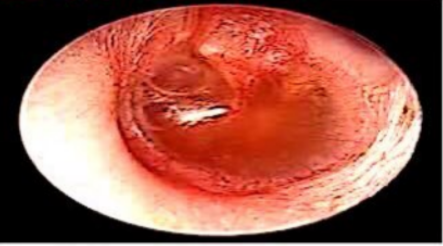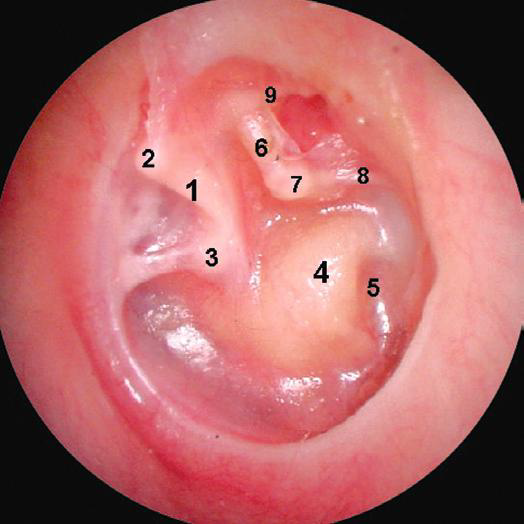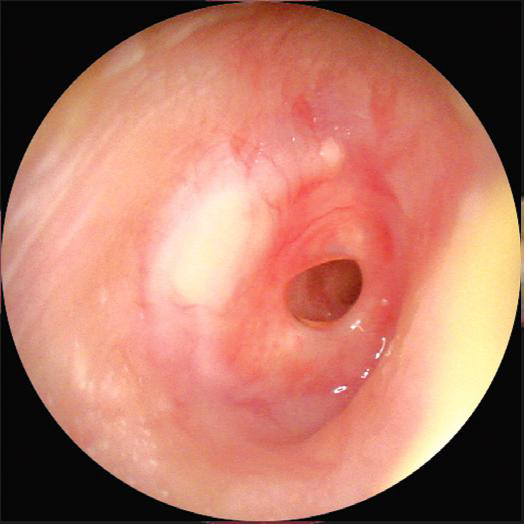Everything You Need To Know About Human Ear

Do you know what is our ear made of? How much weight does ear have? What are the three major parts of the ear? Check out our online quiz to test your knowledge and learn interesting facts as you play.
- 1.
With regard to Ramsay Hunt syndrome, the following statement is false:
- A.
It may present with facial palsy, hearing loss and vertigo.
- B.
It can be differentiated from Bell’s palsy by the presence of cutaneousvesicles in the ear canal.
- C.
It is caused by adenovirus.
- D.
It may be treated with acyclovir and prednisolone.
Correct Answer
C. It is caused by adenovirus. -
- 2.
Syringing of the ear is used to remove wax. Which of the following statements are true regarding this technique?
- A.
Before syringing, the wax should be softened using cerum-enolytics
- B.
The syringe should be aimed downwards and forwards in the earcanal.
- C.
Water should be at –1ºC in order to break up the wax effectively.
- D.
The syringe should be aimed upwards and backwards in the earcanal.
- E.
A and d
Correct Answer
E. A and dExplanation
Syringing of the ear is a technique used to remove wax. Before syringing, it is important to soften the wax using cerum-enolytics, which makes it easier to remove. The syringe should be aimed upwards and backwards in the ear canal to ensure that the water reaches the wax and helps to dislodge it. Therefore, statements a and d are true regarding this technique.Rate this question:
-
- 3.
A 75-year-old diabetic patient presents with severe ear pain and granulation tissue at external auditory canal with faciaI nerve involvement. The most likely diagnosis is:
- A.
Necrotizing otitis externa
- B.
Nasopharyngeal carcinoma
- C.
Acute suppurative otitis media
- D.
Chronic suppurative otitis media
Correct Answer
A. Necrotizing otitis externaExplanation
The most likely diagnosis for a 75-year-old diabetic patient presenting with severe ear pain and granulation tissue at the external auditory canal with facial nerve involvement is necrotizing otitis externa. Necrotizing otitis externa is a severe infection of the external auditory canal that can occur in immunocompromised individuals, such as those with diabetes. It is characterized by severe pain, granulation tissue, and involvement of the facial nerve. Nasopharyngeal carcinoma is a type of cancer that affects the nasopharynx and would not typically present with these symptoms. Acute and chronic suppurative otitis media are infections of the middle ear and would not involve the external auditory canal or the facial nerve.Rate this question:
-
- 4.
In attico-antral CSOM
- A.
Copious malodorous otorrhoea is common.
- B.
Otalgia is commonly a presenting symptom.
- C.
A central perforation is invariable.
- D.
Vertigo is due to blockage of the eustachian tube.
- E.
All of above
- F.
None of above
Correct Answer
F. None of above -
- 5.
The commonest cause of CHL in childern is:
- A.
Adhesive otitis media
- B.
Secretory otitis media
- C.
Chronic suppurative otitis media
- D.
Otosclerosis
Correct Answer
B. Secretory otitis mediaExplanation
Secretory otitis media is the commonest cause of conductive hearing loss (CHL) in children. This condition occurs when fluid accumulates in the middle ear, leading to a decrease in sound transmission. It is often associated with upper respiratory tract infections and can cause temporary hearing loss. Adhesive otitis media, chronic suppurative otitis media, and otosclerosis can also cause CHL, but secretory otitis media is the most common cause in children.Rate this question:
-
- 6.
Cholesteatoma may show the following tympanic membrane features except:
- A.
Attic perforation in the pars flaccida
- B.
Marginal perforation not surrounded by rim all around
- C.
Retraction pocket in the postero-superior part
- D.
Central perforation in pars tensa surrounded by rim all around
- E.
None of above
Correct Answer
D. Central perforation in pars tensa surrounded by rim all aroundExplanation
Cholesteatoma is a condition characterized by the abnormal growth of skin cells in the middle ear. It typically presents with certain tympanic membrane features. Attic perforation in the pars flaccida, marginal perforation not surrounded by a rim all around, and retraction pocket in the postero-superior part are all commonly seen in cholesteatoma. However, a central perforation in the pars tensa surrounded by a rim all around is not a typical feature of cholesteatoma. Therefore, the correct answer is "Central perforation in pars tensa surrounded by rim all around."Rate this question:
-
- 7.
Tympanoplasty with cortical mastoidectomy is usually done in:
- A.
Adhesive otitis media
- B.
Chronic safe suppurative O.M with persistent discharge
- C.
Secretory otits media after failure of medical treatment
- D.
Acute suppurative O.M after failure of medical treatment
Correct Answer
B. Chronic safe suppurative O.M with persistent dischargeExplanation
Tympanoplasty with cortical mastoidectomy is usually done in cases of chronic safe suppurative otitis media with persistent discharge. This procedure involves repairing the eardrum (tympanic membrane) and removing infected tissue from the mastoid bone. Chronic safe suppurative otitis media refers to a long-standing infection of the middle ear with a persistent discharge, and tympanoplasty with cortical mastoidectomy is often necessary to treat this condition and prevent further complications.Rate this question:
-
- 8.
Secretory O.M is characterized by:
- A.
More common in middle age
- B.
Type A curve on tympanogram
- C.
It’s predisposed by enlarged adenoids
- D.
It is treated by myringoplasty
Correct Answer
C. It’s predisposed by enlarged adenoidsExplanation
Secretory O.M is characterized by its predisposition by enlarged adenoids. This means that having enlarged adenoids increases the likelihood of developing secretory O.M. The other characteristics mentioned in the question, such as being more common in middle age, having a Type A curve on tympanogram, and being treated by myringoplasty, are not specific to secretory O.M and do not define its characteristics.Rate this question:
-
- 9.
All of the following statements about tympanosclerosis are true except:
- A.
It is seen as white patches through the drum
- B.
I t causes CHL
- C.
It may follow myringotomy operation
- D.
It causes fixation of the footplate of the stapes by new bone formaton
Correct Answer
D. It causes fixation of the footplate of the stapes by new bone formatonExplanation
Tympanosclerosis is a condition characterized by the formation of white patches on the eardrum. It can cause conductive hearing loss (CHL) and may occur after a myringotomy operation. However, it does not cause fixation of the footplate of the stapes by new bone formation.Rate this question:
-
- 10.
With regard to pinna haematoma, the following statements are true except:
- A.
It is usually caused by trauma which results in bleeding into the subperichondrial layer.
- B.
Ideally it should be left to resolve spontaneously.
- C.
It can result in the remodelling of the pinna to form a cauliflower ear.
- D.
The area affected by the haematoma should not be compressed or placed under pressure if the haematoma is evacuated.
- E.
B and d
Correct Answer
E. B and dExplanation
Pinna haematoma is usually caused by trauma which results in bleeding into the subperichondrial layer. It can result in the remodelling of the pinna to form a cauliflower ear. However, it is not ideal to leave it to resolve spontaneously as it can lead to complications such as infection or deformity. Additionally, the area affected by the haematoma should not be compressed or placed under pressure if the haematoma is evacuated, as this can cause further damage. Therefore, statements b and d are incorrect.Rate this question:
-
- 11.
Q1-The etiology of this case is
- A.
Congenital
- B.
Traumatic
- C.
Inflammatory
- D.
Neoplastic
Correct Answer
A. CongenitalExplanation
The etiology of this case is congenital, which means that the condition or disease is present from birth. This suggests that the cause of the case can be attributed to factors that occurred during fetal development or genetic abnormalities that were present at birth. It is important to consider this possibility when diagnosing and treating the patient, as the treatment approach may differ depending on the underlying cause.Rate this question:
-
- 12.
Q2 (11) The previous case is treated by:
- A.
Local excision
- B.
Radical mastoidectomy
- C.
Cortical mastoidectomy
- D.
None of above
Correct Answer
A. Local excisionExplanation
Local excision is the correct answer because it refers to the surgical removal of the tumor or abnormal tissue from a specific area, without removing the entire organ or structure. In the context of the previous case, local excision would involve removing the affected tissue or tumor in the mastoid region without performing a more extensive procedure like radical or cortical mastoidectomy, which involve the removal of a larger portion of the mastoid bone.Rate this question:
-
- 13.
Q1 The possible diagnosis is :
- A.
Furuncle
- B.
Otomycosis
- C.
Exostosis
- D.
Malignant O.E
Correct Answer
B. OtomycosisExplanation
Otomycosis is the correct answer because it is a fungal infection of the external ear canal. It is characterized by itching, pain, and discharge from the ear. Furuncle is a localized infection of a hair follicle, Exostosis refers to the abnormal growth of bone in the ear canal, and Malignant O.E refers to malignant otitis externa, which is a severe infection of the external ear canal.Rate this question:
-
- 14.
Q2 In the previous case, the most common symptom is:
- A.
Pain
- B.
Deafness
- C.
Itching
- D.
Discharge
- E.
Vertigo
Correct Answer
C. ItchingExplanation
In the previous case, the most common symptom is itching. This suggests that the condition being referred to may be related to a skin or allergic reaction. Itching is a common symptom associated with various skin conditions such as eczema, dermatitis, or insect bites. It can also be a symptom of certain allergic reactions, such as hives or contact dermatitis. Without further information, it is difficult to determine the exact condition causing the itching, but it is clear that itching is the most common symptom in this case.Rate this question:
-
- 15.
Q1 The possible diagnosis is:
- A.
Aural polyp
- B.
Otomycosis
- C.
CSOM unsafe
- D.
Glue ear
Correct Answer
D. Glue earExplanation
Glue ear is the correct answer because it is a condition where the middle ear becomes filled with thick, sticky fluid instead of air. This can cause hearing loss and can be common in children. Aural polyp refers to a growth in the ear canal, otomycosis is a fungal infection of the ear, and CSOM unsafe refers to chronic suppurative otitis media which is an infection of the middle ear. None of these conditions match the symptoms described in the question, making glue ear the most likely diagnosis.Rate this question:
-
- 16.
Q2 The previous case is more common in childern
- A.
True
- B.
False
Correct Answer
A. TrueExplanation
The given answer "True" is correct because the statement in the question suggests that the previous case (which is not mentioned) is more common in children. Since it is not specified what the previous case refers to, we can assume that the statement is true based on the assumption that the previous case being referred to is indeed more common in children.Rate this question:
-
- 17.
Q3 The treatment may include adenoidectomy
- A.
True
- B.
False
Correct Answer
A. TrueExplanation
The given statement suggests that adenoidectomy may be included in the treatment. Adenoidectomy is a surgical procedure to remove the adenoids, which are lymphoid tissue located at the back of the nasal cavity. This procedure is often recommended when the adenoids are enlarged and causing problems such as chronic infections, difficulty breathing, or recurrent ear infections. Therefore, the statement is true as it implies that adenoidectomy may be a part of the treatment plan.Rate this question:
-
- 18.
Q1 Otoendoscopy reveals :
- A.
Secretory otitis media
- B.
Adhesive otitis media
- C.
Acute otitis media
- D.
CSOM unsafe
Correct Answer
B. Adhesive otitis mediaExplanation
Otoendoscopy is a procedure used to examine the ear canal and middle ear. Adhesive otitis media is a condition where the middle ear is filled with thick, sticky fluid that causes the eardrum to stick to the middle ear bones. This can result in hearing loss and discomfort. Therefore, if otoendoscopy reveals adhesive otitis media, it means that the examination has identified the presence of this condition in the middle ear.Rate this question:
-
- 19.
Q2 Type B tympanogram is characteristic for the previous case
- A.
True
- B.
False
Correct Answer
B. FalseExplanation
A Type B tympanogram is not characteristic for the previous case. A Type B tympanogram indicates a flat tympanic membrane, which is often associated with a middle ear infection or fluid in the middle ear. Without further information about the previous case, it cannot be concluded that a Type B tympanogram is characteristic for it. Therefore, the correct answer is False.Rate this question:
-
- 20.
Q1 The possible diagnosis is :
- A.
Cholesteatoma
- B.
CSOM safe
- C.
Acute otitis media
- D.
Tympanosclerosis
Correct Answer
B. CSOM safeExplanation
CSOM stands for Chronic Suppurative Otitis Media, which is a long-term infection of the middle ear. The term "safe" refers to the condition being inactive or not currently causing any harm or symptoms. Therefore, the correct answer suggests that the possible diagnosis is CSOM that is currently not causing any harm or complications.Rate this question:
-
- 21.
Q2 Surgical treatment of the previous case is :
- A.
Myringoplasty
- B.
Radical mastoidectomy
- C.
Tympanoplasty with or without cortical mastoidectomy
- D.
None of above
Correct Answer
C. Tympanoplasty with or without cortical mastoidectomyExplanation
The surgical treatment for the previous case would be tympanoplasty with or without cortical mastoidectomy. Tympanoplasty is a procedure to repair a perforated eardrum, while cortical mastoidectomy involves removing infected mastoid bone in the ear. These procedures are commonly performed together to restore hearing and prevent further complications in cases where there is a perforated eardrum and infection in the mastoid bone.Rate this question:
-
- 22.
A 30 year old patient presented with right earache for 3 days. The pain increases on mastication . the tragus was tender with localized swelling in the ear canal on examination, The prvisional diagnosis is
- A.
Otomycosis
- B.
Acute O.M
- C.
Furuncle
- D.
Acute mastoiditis
Correct Answer
C. FuruncleExplanation
The patient's symptoms of right earache, pain increasing on mastication, tenderness of the tragus, and localized swelling in the ear canal are consistent with a furuncle. A furuncle, also known as a boil, is a bacterial infection of a hair follicle in the ear canal. It is often painful and can cause swelling and tenderness. Otomycosis, or fungal infection of the ear canal, would typically present with itching and discharge rather than localized swelling. Acute O.M (acute otitis media) refers to a middle ear infection, which does not match the symptoms described. Acute mastoiditis is a more severe infection involving the mastoid bone, and would typically present with additional symptoms such as fever and hearing loss.Rate this question:
-
Quiz Review Timeline +
Our quizzes are rigorously reviewed, monitored and continuously updated by our expert board to maintain accuracy, relevance, and timeliness.
-
Current Version
-
Mar 21, 2023Quiz Edited by
ProProfs Editorial Team -
Mar 20, 2021Quiz Created by
Themes
 Back to top
Back to top



